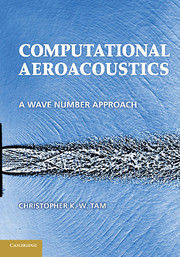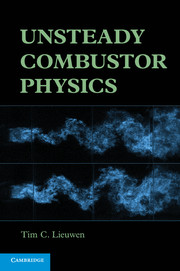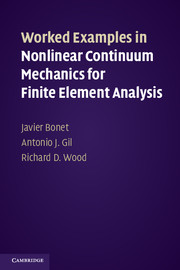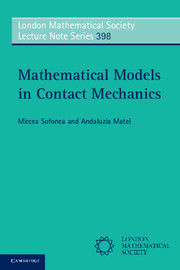Refine search
Actions for selected content:
8126 results in Fluid dynamics and solid mechanics
Copyright page
-
- Book:
- Counterflows
- Published online:
- 05 November 2012
- Print publication:
- 15 October 2012, pp iv-iv
-
- Chapter
- Export citation
1 - Introduction
-
- Book:
- Counterflows
- Published online:
- 05 November 2012
- Print publication:
- 15 October 2012, pp 1-10
-
- Chapter
- Export citation
References
-
- Book:
- Counterflows
- Published online:
- 05 November 2012
- Print publication:
- 15 October 2012, pp 457-466
-
- Chapter
- Export citation
Contents
-
- Book:
- Counterflows
- Published online:
- 05 November 2012
- Print publication:
- 15 October 2012, pp v-xii
-
- Chapter
- Export citation
6 - Jetlike Swirling Counterflows
-
- Book:
- Counterflows
- Published online:
- 05 November 2012
- Print publication:
- 15 October 2012, pp 122-167
-
- Chapter
- Export citation
Counterflows - Half title page
-
- Book:
- Counterflows
- Published online:
- 05 November 2012
- Print publication:
- 15 October 2012, pp i-ii
-
- Chapter
- Export citation
5 - Conical Counterflows Driven by Swirl
-
- Book:
- Counterflows
- Published online:
- 05 November 2012
- Print publication:
- 15 October 2012, pp 73-121
-
- Chapter
- Export citation
8 - Separation Counterflows
-
- Book:
- Counterflows
- Published online:
- 05 November 2012
- Print publication:
- 15 October 2012, pp 219-265
-
- Chapter
- Export citation
14 - Stability of Conical Flows
-
- Book:
- Counterflows
- Published online:
- 05 November 2012
- Print publication:
- 15 October 2012, pp 411-456
-
- Chapter
- Export citation
Index
-
- Book:
- Counterflows
- Published online:
- 05 November 2012
- Print publication:
- 15 October 2012, pp 467-470
-
- Chapter
- Export citation
13 - Magnetic Counterflows
-
- Book:
- Counterflows
- Published online:
- 05 November 2012
- Print publication:
- 15 October 2012, pp 379-410
-
- Chapter
- Export citation
3 - Bifurcation of Swirl in Conical Counterflows
-
- Book:
- Counterflows
- Published online:
- 05 November 2012
- Print publication:
- 15 October 2012, pp 28-59
-
- Chapter
- Export citation
ON THIN OR SLENDER BODIES
- Part of
-
- Journal:
- The ANZIAM Journal / Volume 53 / Issue 3 / January 2012
- Published online by Cambridge University Press:
- 12 October 2012, pp. 190-212
-
- Article
-
- You have access
- Export citation
MODELLING THE INTRODUCTION OF WOLBACHIA INTO AEDES AEGYPTI MOSQUITOES TO REDUCE DENGUE TRANSMISSION
-
- Journal:
- The ANZIAM Journal / Volume 53 / Issue 3 / January 2012
- Published online by Cambridge University Press:
- 10 October 2012, pp. 213-227
-
- Article
-
- You have access
- Export citation

Computational Aeroacoustics
- A Wave Number Approach
-
- Published online:
- 05 October 2012
- Print publication:
- 28 September 2012

Unsteady Combustor Physics
-
- Published online:
- 05 October 2012
- Print publication:
- 27 August 2012

Worked Examples in Nonlinear Continuum Mechanics for Finite Element Analysis
-
- Published online:
- 05 October 2012
- Print publication:
- 02 August 2012

Mathematical Models in Contact Mechanics
-
- Published online:
- 05 October 2012
- Print publication:
- 13 September 2012
Preface
-
- Book:
- Computational Aeroacoustics
- Published online:
- 05 October 2012
- Print publication:
- 28 September 2012, pp xi-xiv
-
- Chapter
- Export citation
Frontmatter
-
- Book:
- Computational Aeroacoustics
- Published online:
- 05 October 2012
- Print publication:
- 28 September 2012, pp i-vi
-
- Chapter
- Export citation
